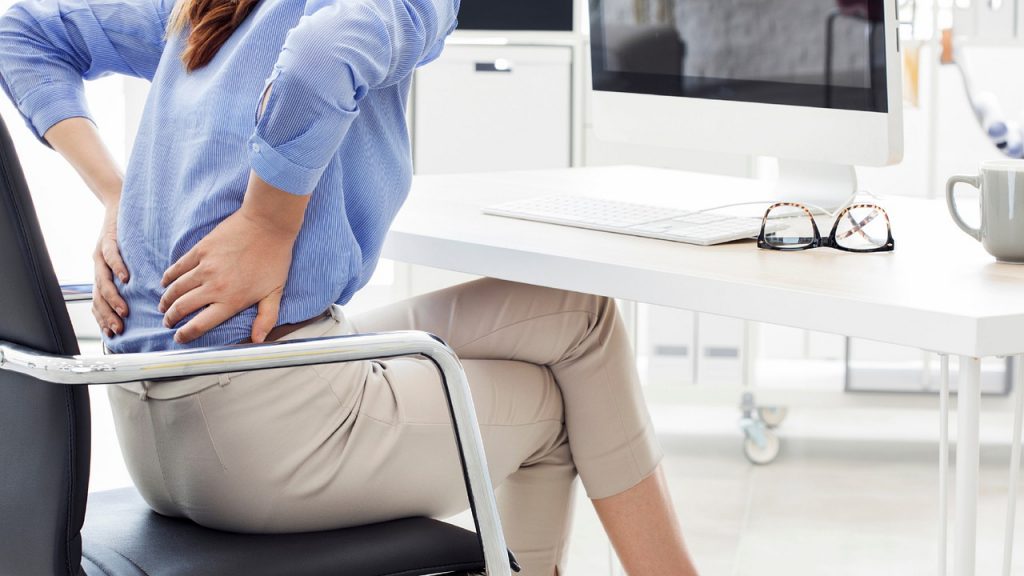The Best Way To Get Rid Of Your Desk Work-Related Neck And Back Pain
Experts at NASA developed a series of desk exercises, like one called the Standing Desk Plank, that can help do wonders for the neck and back pain that occurs as a result of sitting at a desk all day.
This article is more than 2 years old

Several jobs involve sitting at a computer all day. And while it might seem less strenuous than working on a construction site, the body still becomes stressed. This results in neck and back pain which, depending on how long it’s left untreated, may range from moderate to severe. Solutions include focusing on posture or ergonomics. But exercise researchers say intervals of movement can help to reduce tension while working.
Often referred to as “exercise snacks,” small bursts of activity can prevent neck and back pain. And understanding how it works is pretty simple too. When the brain senses physical or emotional stress, the body releases hormones that cause our muscles to tighten. Exercise counters that response by allowing more blood to reach muscles, tendons, and ligaments. Nutrients are also sent to the spine’s joints and discs.
Developed by fitness specialists at NASA, Desk Fit is a set of 20, pain-preventing, one-minute exercises that people can do at their work station to prevent neck and back pain. The easiest ones to try include the Standing Desk Plank which starts by placing your forearms on the desk. Then extend your legs with your toes on the floor. Contract your abdominal muscles, while maintaining a straight line from your head to your toes. Hold the position for 10 to 15 seconds.
Up next is the Chair Sit and Stand. Begin by standing in front of a chair with your legs shoulder-width apart. Then squat down like you’re about to take a seat but without actually touching it. Keep your back straight, knees above your feet, and weight on the heels. Straighten your legs to return to the starting position and repeat 10 to 15 times. The movement will do wonders for any neck and back pain.
But if doing mini exercises at the office seems a little awkward, health experts say that any sort of stretching, flexing, or fidgeting can help reduce neck and back pain. Speaking to NPR, Director of the National Institute of Health’s National Center for Complementary and Integrative Health, Doctor Helene Langevin said taking moving around throughout the day prevents your body from congealing.
“Movement is also hydrating for connective tissues and joints, reversing the stiffening that arises with too much sedentary behavior,” Doctor Langevintold the publication. Along with alleviating neck and back pain, moving also has broader health benefits. This includes improved cardiovascular health, reduced stress, and muscle loss. Movement can also delay some causes of mortality.
Addressing the neck and back pain that plagues a large portion of the workforce, Kieran O’Sullivan, an Associate Professor of Physiotherapy at the University of Limerick’s School of Allied Health in Ireland, said the assumption is that poor posture and slouching causes pain. But this is not the root cause. “We have been trying all these fixes with ergonomics and it has arguably not fixed the problem, she told NPR. “I think it is more about needing breaks from the working day with movement.”
So the next time you feel your body straining from neck and back pain, try walking briskly or taking the stairs instead of the elevator. Every small movement helps.



